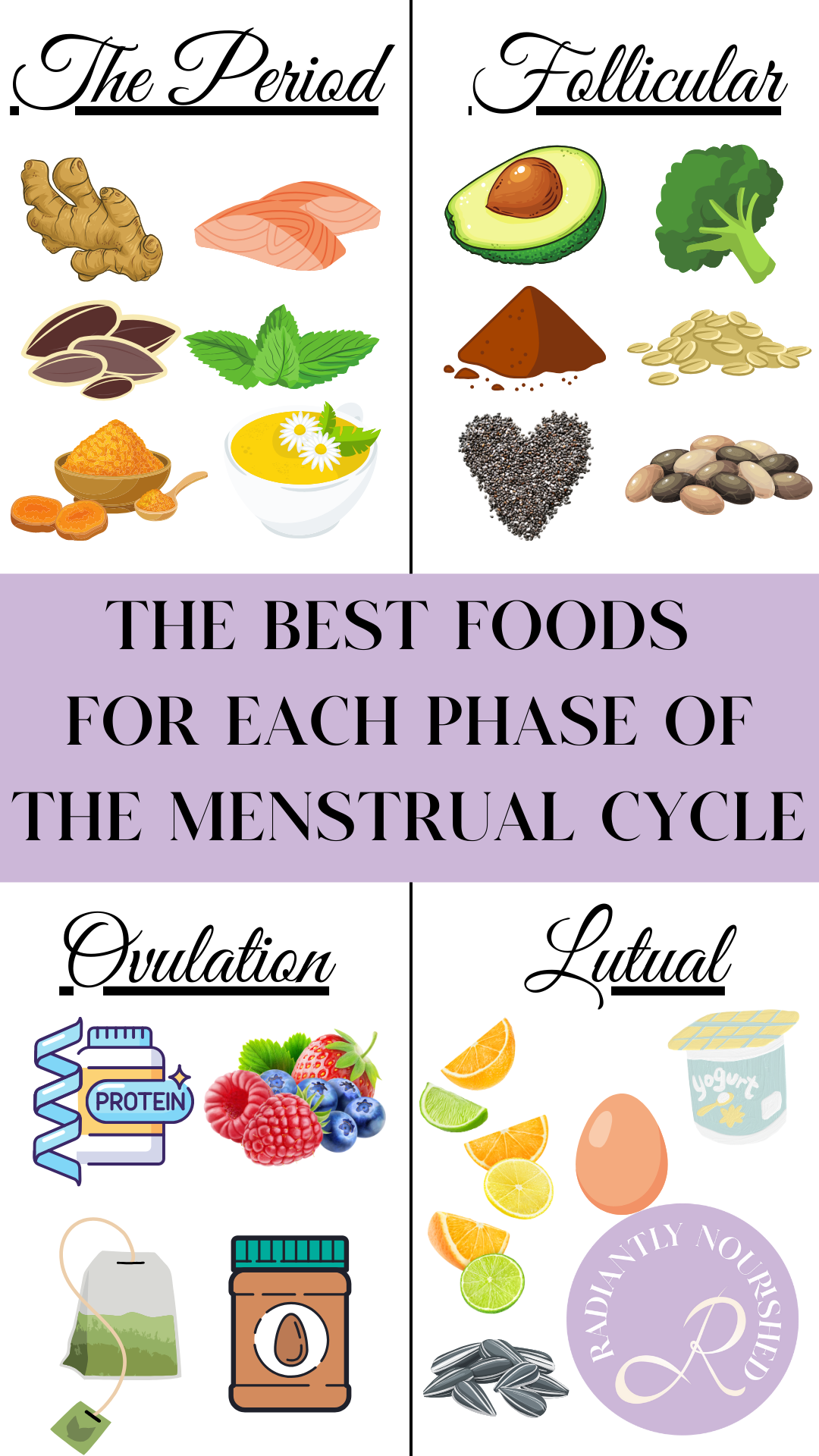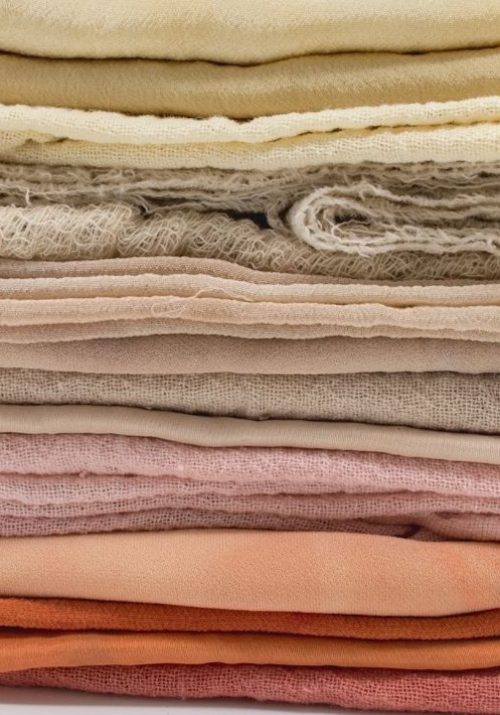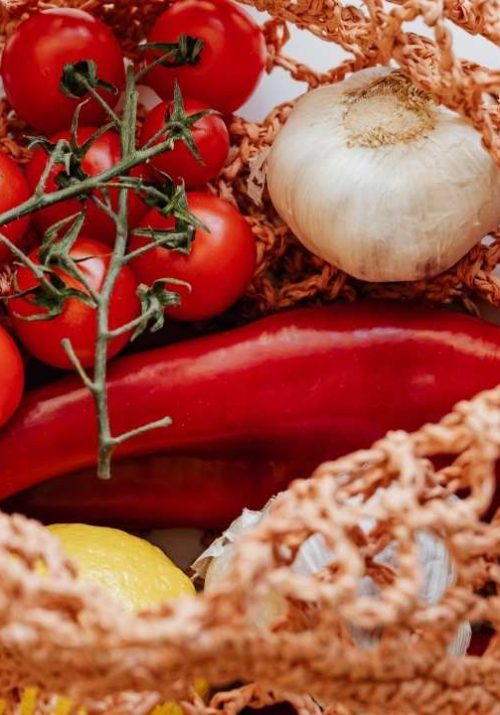Support your body and cycle by knowing the best foods to eat for each stage of the menstrual cycle.
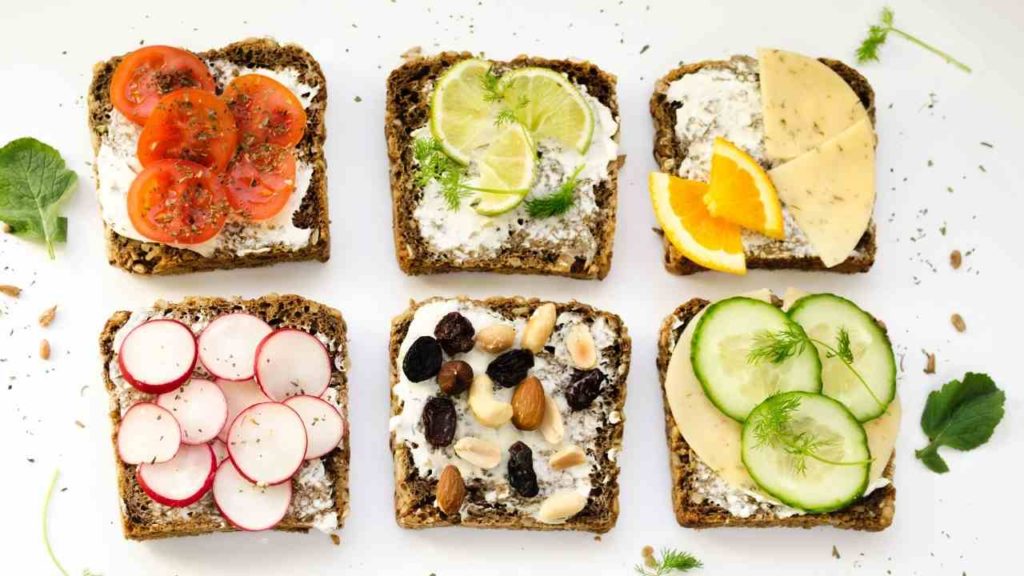
Each month, women go through hormone fluctuations which are part of four phases of the menstrual cycle. Since we know that what we eat greatly impacts our overall health, it’s no surprise that our nutrition also plays a vital role in hormone regulation throughout the menstrual cycle. Similarly, certain diets can cause an imbalance in reproductive hormones, such as estrogen, testosterone, and progesterone, while others can help stabilize hormones and keep periods regular.
As the human body advances through each menstrual stage, the hormone levels shift and fluctuate. However, our bodies’ nutritional demands also change as we progress through each stage in order to cope with the symptoms and critical functions of our physical and emotional health.
By consuming certain foods during each stage, you can maximize your energy levels, adjust your mood, and eliminate annoying period symptoms. So, you don’t have to dread that time of the month and rather embrace the wisdom behind it.
In this blog post, you will get a detailed list of the best foods to eat for each stage of the menstrual cycle along with a short description of what is going on in the body at each stage. There is a lot covered here so you will definitely want to bookmark this post for later.
Below each phase, there is a link to an organized shopping list on Amazon that has all of the recommended foods listed!
The Best Foods To Eat For Each Stage Of The Menstrual Cycle:
Stage 1 – Menstruation
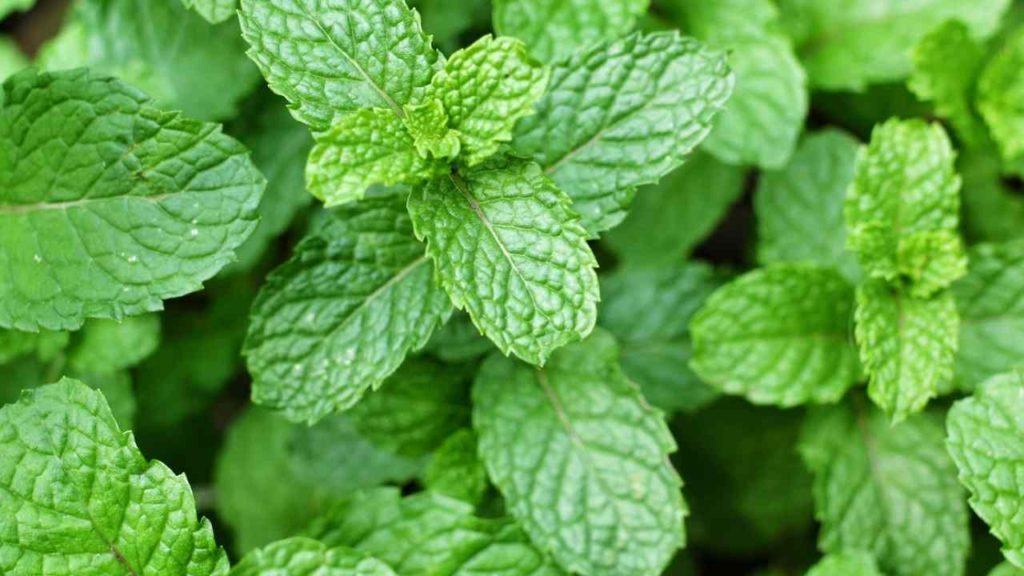
This marks the first day of the menstrual cycle. During the initial days of the period, the shedding of the uterine lining and blood loss leads to a hormonal dip. Because your hormones are at their lowest, your energy levels also plummet, and your body requires the right amount of water and nutrient-rich foods to maintain blood sugar and energy levels.
- Any Warm And Grounding Foods: Think of menstruation as your body’s internal winter. Opt for warm and grounding foods to support your body during this time.
- Ginger: Start incorporating fresh ginger into all of your meals before and during your period. Fresh ginger and ginger tea is a great natural cramp remedy.
- Salmon: Or any fatty fish is a great source of omega-3, iron, and protein which are essential to a healthy period. Omega-3 can also relieve cramps.
- Flaxseed or Flaxseed Oil: A plant-based option that is high in omega-3.
- Yogurt: If you are cramping you may have a lower appetite. Yogurt is a great option for an easy-to-consume and digest food that is high in protein, magnesium, calcium, and probiotics.
- Chamomile Tea: This calming herbal tea can help calm the nervous system and soothe cramps.
- Oatmeal: Oats are another great option for an easy-to-digest food that is packed with nutrients to help you feel your best while on your period. Make sure to shop for glyphosate-free and organic when buying oatmeal.
- Peppermint Tea: If you experience nausea or diarrhea as a period symptom, peppermint is the best herbal tea option as it is so soothing to the stomach.
- Dark Chocolate: This delicious treat will boost your mood and is rich in beneficial magnesium and iron.
- For Seed Cycling: If you are following seed cycling, eat one tablespoon of ground flaxseed and one tablespoon of pumpkin seeds each day from the beginning of your period to the end of the follicular phase. Learn all about Seed Cycling here.
Stage 2 – Follicular Phase
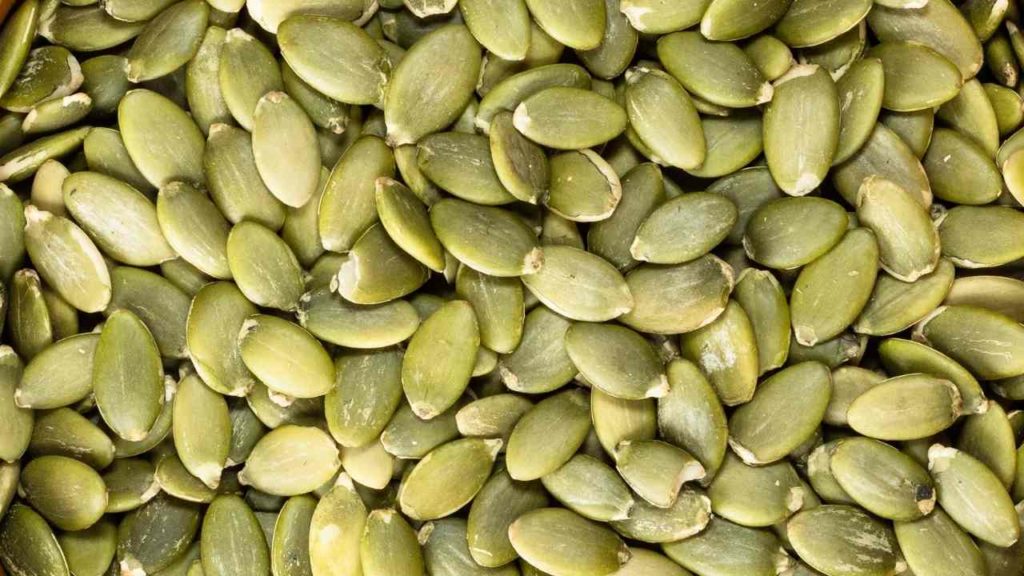
Next comes the follicular phase, which begins the day after your menstrual cycle ends. This typically lasts between 7 to 10 days when your body starts preparing to release an egg. In the initial days of the follicular phase, the estrogen and testosterone levels are pretty low. However, as this phase progresses, the hormones ramp up, and you suddenly experience a boost in mood and energy. The testosterone also boosts your libido, so you feel more confident and willing to take more risks.
- Magnesium-Rich Foods: Magnesium levels are lowest during the follicular phase so it is important to add the following foods into your diet: pumpkin seeds, almonds, spinach, cacao powder, black beans, edamame, oatmeal, yogurt, dark chocolate, and chia seeds.
- Fiber-Rich Foods: Too much estrogen in the body can create unhealthy periods. Fiber can help lower estrogen levels while also increasing digestive health. Fiber also helps to keep the body full and sustained which is perfect for the follicular phase.
- Healthy Fats: Healthy fats include fatty fish, avocados, nut butter, nuts, seeds, and olive oil. These will help to sustain and power the body through the follicular phase when energy levels are the highest.
- Coniferous Veggies: These vegetables are always amazing to have in your diet due to their high levels of vitamins, minerals, and fiber.
- For Seed Cycling: If you are following seed cycling, eat one tablespoon of ground flaxseed and one tablespoon of pumpkin seeds each day from the beginning of your period to the end of the follicular phase. Learn all about Seed Cycling here.
Stage 3 – Ovulation Days
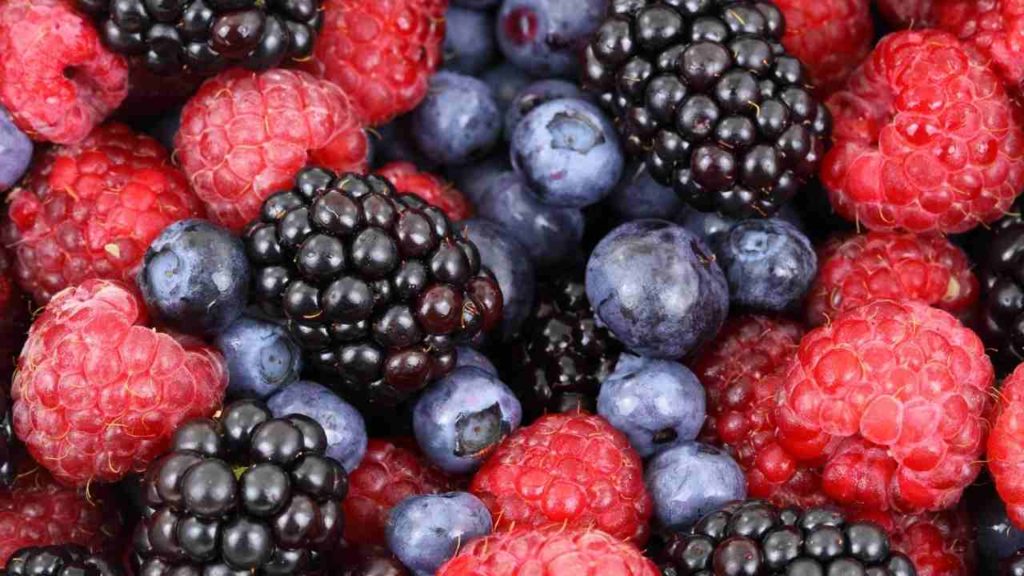
During this phase, the ovary releases the egg that goes to the uterus, which usually happens during the middle of your cycle and only lasts for a few days. Also, the body temperature rises by 0.5 degrees during ovulation, and you may feel hotter than usual. When you have a surplus of estrogen, you should eat foods that help your liver since they have health benefits and protect you from environmental contaminants that can affect your hormones. Anti-inflammatory foods such as nuts, turmeric, fatty fish, leafy vegetables, and citrus fruits will do the trick.
- Lean Protein: This will help to sustain your body during ovulation while you feel higher energy levels.
- Antioxidant-Rich Fruit: This will help you to increase glutathione and support the natural detoxification of excess hormones in the liver.
- Dandelion Root Tea: This tea is amazing for supporting the liver’s natural detoxification process.
- Coniferous Veggies: This will also help with the liver’s natural detoxification process.
- Healthy Fats: Like lean protein, healthy fats will help to sustain your body through higher energy levels.
- For Seed Cycling: If you are following seed cycling, eat one tablespoon of sesame seeds and one tablespoon of sunflower seeds each day from the time you ovulate through the end of the luteal phase. Learn all about Seed Cycling here. Feel free to eat tahini or sunflower seed butter instead of whole seeds.
Stage 4 – Luteal Phase
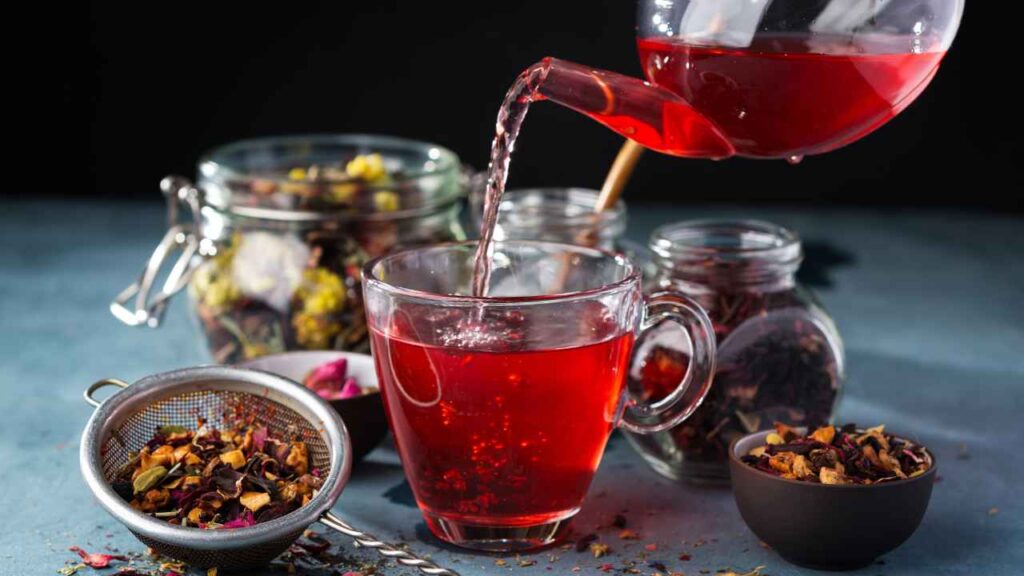
After ovulation, your body hopes that a fertilized egg will implant itself in your uterus. The luteal phase lasts 16-21 days, from the end of ovulation to the start of menstruation. FSH and LH levels drop significantly the following ovulation and remain low for the rest of the cycle. Estrogen and testosterone levels drop as well, but estrogen resurfaces later in the luteal phase.
Our feel-good hormones, such as serotonin and dopamine, tend to decline during this time. This can cause not only stress or despair but also huge cravings for sweets and carbohydrates, which provide a brief dopamine boost but make us feel worse in the long run.
- Citrus Fruits: It’s vital to eat foods that promote progesterone production so that it can raise high enough to induce healthy uterine lining growth. Progesterone levels can be enhanced by eating foods high in zinc and magnesium (nuts, seeds, oysters, beans, etc.), vitamin C (citrus, leafy greens, bell pepper), and vitamin B6 (salmon, bananas, walnuts).
- High Protein: You will need plenty of protein during the luteal phase to prepare for your period.
- Calcium-Rich Foods: Calcium has been shown to help women who have suffered from PMS symptoms. A few great options for calcium-rich foods include yogurt, chia seeds, sunflower seeds, and lentils.
- Magnesium Rich Foods: These can help lower anxiety, promote deeper sleep, and assist with bloating. These foods include pumpkin seeds, almonds, spinach, cacao powder, black beans, edamame, oatmeal, yogurt, dark chocolate, and chia seeds.
- For Seed Cycling: If you are following seed cycling, eat one tablespoon of sesame seeds and one tablespoon of sunflower seeds each day from the time you ovulate through the end of the luteal phase. Learn all about Seed Cycling here. Feel free to eat tahini or sunflower seed butter instead of whole seeds.
- Red Rasberry Leaf Tea: This tea strengthens the uterine lining to help decrease cramps. Rather than waiting for the cramps to start to drink this tea, get ahead of them by enjoying red raspberry leaf tea during the luteal phase.
Bottom Line
What we eat directly impacts our hormonal health. While some women might benefit by eating specific foods at certain times of the cycle, what’s more important is consuming nutrient-rich food during all the phases to stimulate blood sugar regulation and boost your energy and mood for your overall well-being! A diverse and nutrient-dense diet throughout the entire month will always be enough to support your body’s needs.
Don’t Forget To PIN IT:
Tap the Pinterest symbol on the left and Pin this image so you don’t lose this cycle syncing diet guide. You will definitely want to refer back to this.
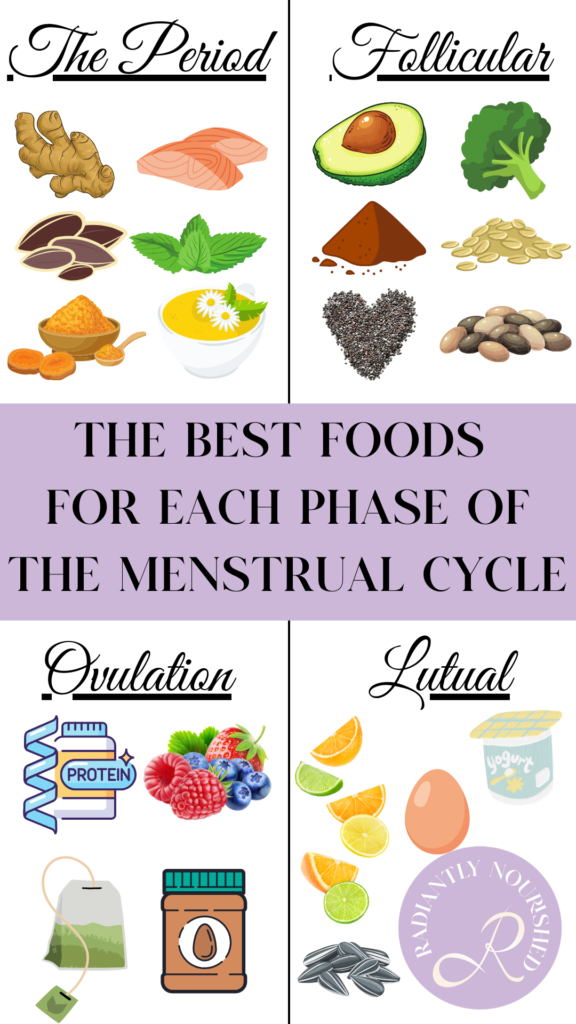
To Stay Up To Date On All Things Beauty And Wellness:
Follow me on Instagram and connect with me on Pinterest, & TikTok.
Thank you for reading,
Jordana
READ NEXT:
What Is The Follicular Phase? + How To Get The Most Out Of This Time
Beat Luteal Phase Symptoms With These Tips
Discover All Menstrual Cycle Blog Posts Here
Please Note: Links above may contain affiliate links that allow me to earn a small commission at no extra charge to you if you choose to purchase an item through them. Thank you for choosing to support Radiantly Nourished!
